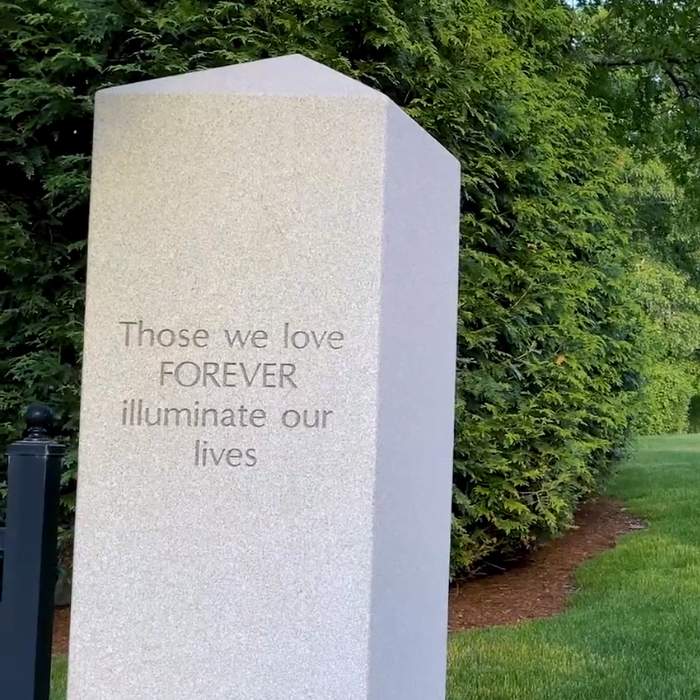
Or Emet Cemetery and Temple Emeth Memorial Park are located on the Brookline, Newton, West Roxbury border on Baker Street along a mile roadway known as the Baker Street Jewish Cemeteries, home to over 40 Jewish Cemeteries. Temple Emeth Memorial Park was established in 1958 by Temple Emeth, founded in 1939 in Chestnut Hill, MA. Or Emet Cemetery was dedicated in 2012. Both Cemeteries are available to all who are of the Jewish Faith.
Originally known as the Mt. Lebanon Cemeteries, founded in the early part of the last century, each cemetery has its unique history. The first thing immigrants, once settled, did on arrival to America was to found a house of worship and a place to bury those that passed from their communities. The Baker Street Cemeteries were established by diverse groups representing fraternal organizations, unions, shuls, and displaced communities from Eastern Europe that resettled in the Boston area. Often, a portion of these groups’ membership dues went towards funding the purchase of burial lots for future family needs.
Jewish funeral services are characterized by simplicity and brevity and may be conducted at a funeral chapel or graveside. Funeral Directors coordinate with our caretakers if a graveside service is preferred.
Burial Service: The burial service is simple, consisting of a psalm, the chanting of the El Malei Rachamim prayer, and the recitation of the Mourner’s Kaddish. Traditionally, the casket is lowered and fully covered with earth before the mourners leave the cemetery – this ritual is called K’vurah. While some families continue this practice, others choose to participate in the burial process by placing just a small shovel full of earth on the casket. At the end of the service, mourners leave the cemetery walking between two lines formed by family and friends offering comfort and support. With this shift from honoring the dead to consoling the bereaved, the official mourning period begins.
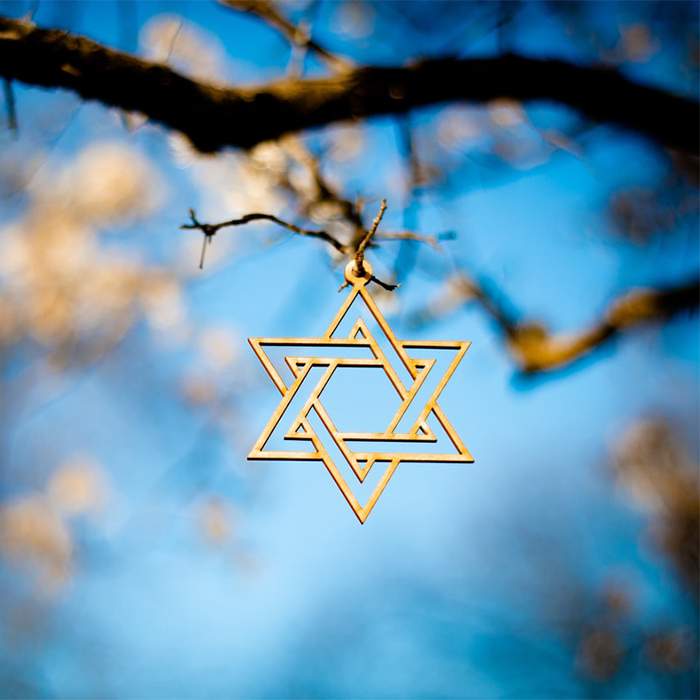
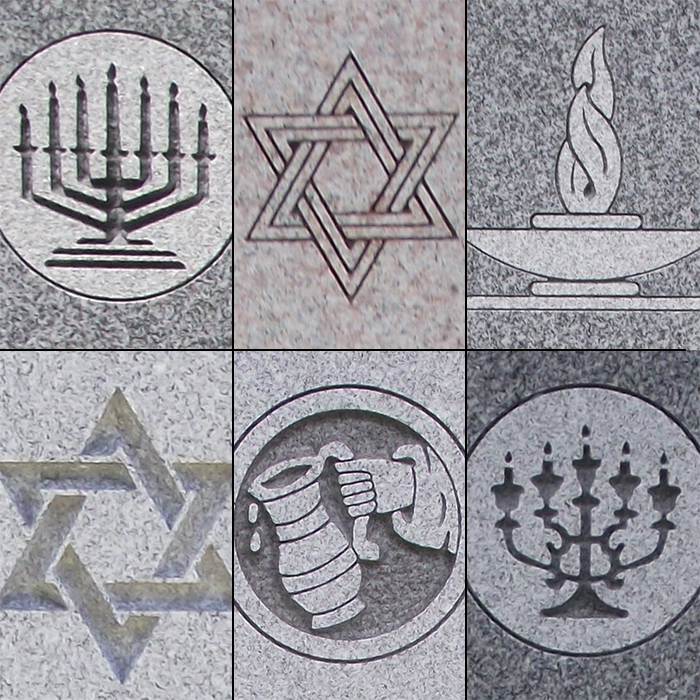
Both Or Emet and Temple Emeth Memorial Park have traditional upright monuments and adhere to strict regulations regarding size and types of granite allowed.
The heading on most Jewish monuments is an inscription of the abbreviation ‘פנּ, which stands for po nikbar, meaning “here lies.” At the bottom of most Jewish monuments is the abbreviation ת נ צ ב ה, a quote from I Samuel 25:29 meaning, “May his soul be bound up in the bond of eternal life.”
Pictured are many familiar symbols; see description below. Other symbols may include bookshelves to indicate a scholar, Tzedakah box for one that was charitable, Shofar for one that blew the Shofar, Lions representing the tribe of Judah, tree stump for a life that was cut short, a pair of tablets symbolizing the Ten Commandments, and other more contemporary symbols like those for a physician, veteran or Holocaust survivor.
Star of David – The Star of David is one of the most recognized symbols in Judaism. It is seen on many Jewish Monuments.
Candlesticks – Candlesticks on a headstone usually symbolize the final resting place of a woman.
Menorah - The Menorah, a symmetrically (7) branched candlesticks, represents the nation of Israel and its mission to be a “light unto the nations.”
Hands - Hands that are held in this position are a symbol for those who have inherited a priestly heritage. The majority of those who have this priestly heritage have had the last name of Cohen – a name which literally means “priest” in Hebrew. They are those who have descended from Aaron, the brother of the ancient prophet Moses.
Pitcher - Gravestones for Levites of Ashkenazi descent often feature the Levite symbol of a pitcher in reference to the Levites’ traditional duty to wash the hands of the temple priest (the Cohen) prior to religious worship.
Today, most visitors to the cemetery place a stone on the base or top of the monument to show that they have been there and that the individual’s memory continues to live on in and through them. It is an acknowledgment that the deceased has not been forgotten.
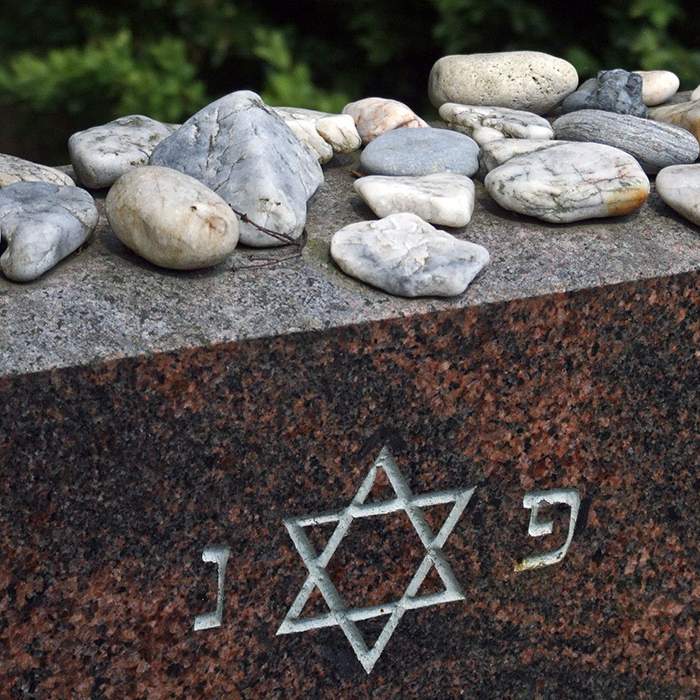
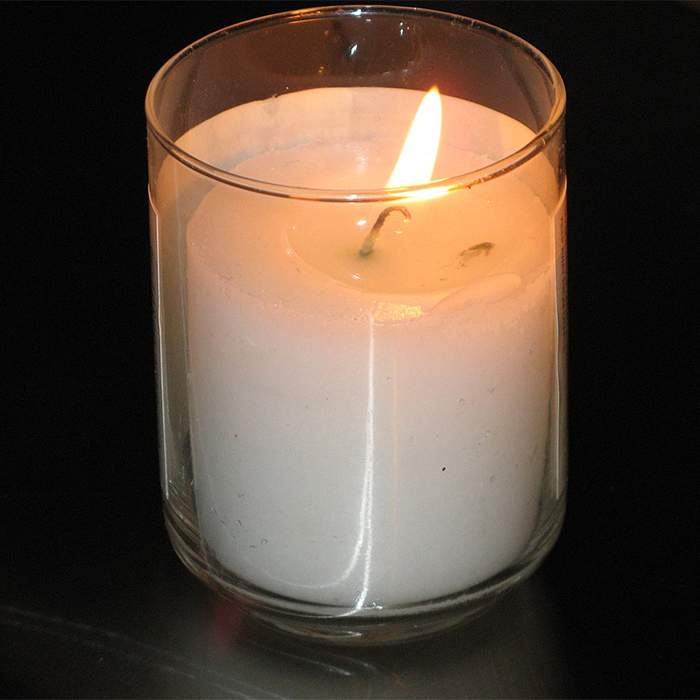
The anniversary of a death is called Yahrzeit. It is observed each year on the Hebrew date of death by reciting Kaddish at a synagogue or with a minyan, and by lighting a memorial candle/lamp at home in memory of your loved one. The candle/lamp is lit at sundown the evening before the civil date. To compute a yahrzeit date, click here or contact your funeral director for a yahrzeit calendar. Note if one passes after sundown, the date of death would be the following day’s Hebrew date. Example: a passing at 10 p.m. on October 28th on the English Calendar would correspond to the Hebrew Calendar date for October 29th – the following day.
This ceremony, which is not required by Jewish law, has come to include the recitation of a few psalms, the chanting of El Malei Rachamim, the Mourner’s Kaddish, and a few words spoken about the deceased. It may be held any time after the mourning period, usually sometime within the first 11 months. Family members themselves often conduct these simple services.
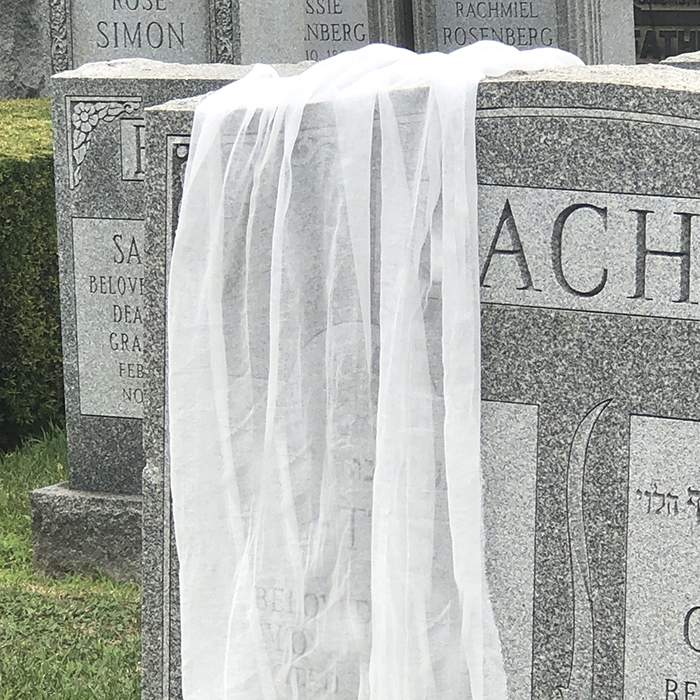
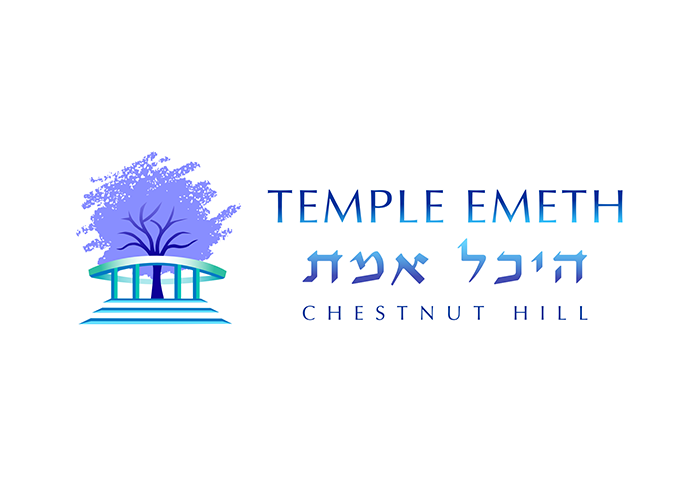
Whether pre-planning or immediate need we are here to assist you in making these important decisions.
For more information, please contact the Temple Emeth office at 617-469-9400.